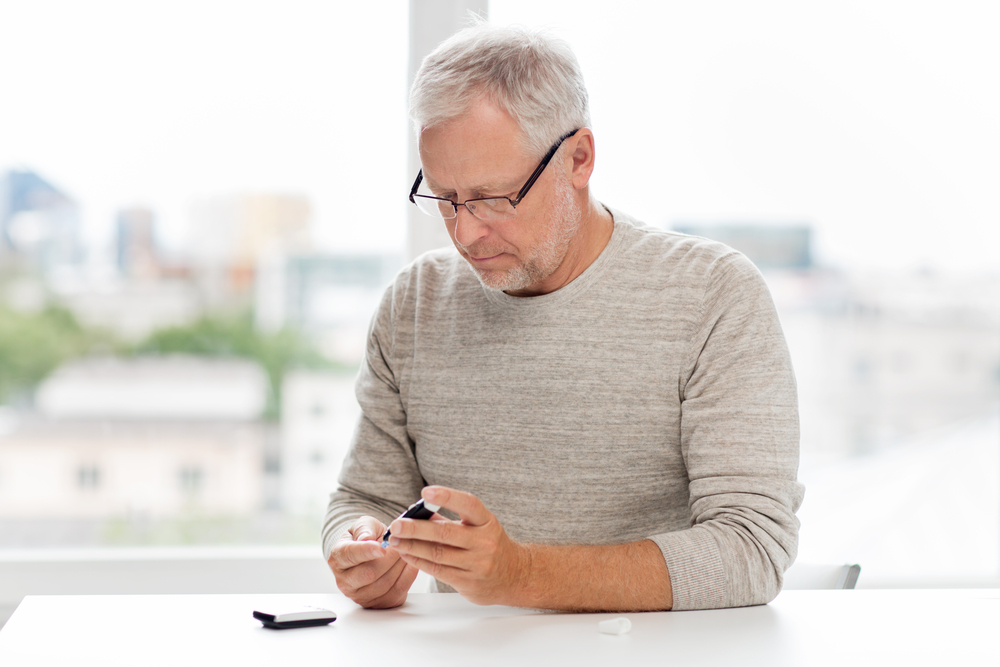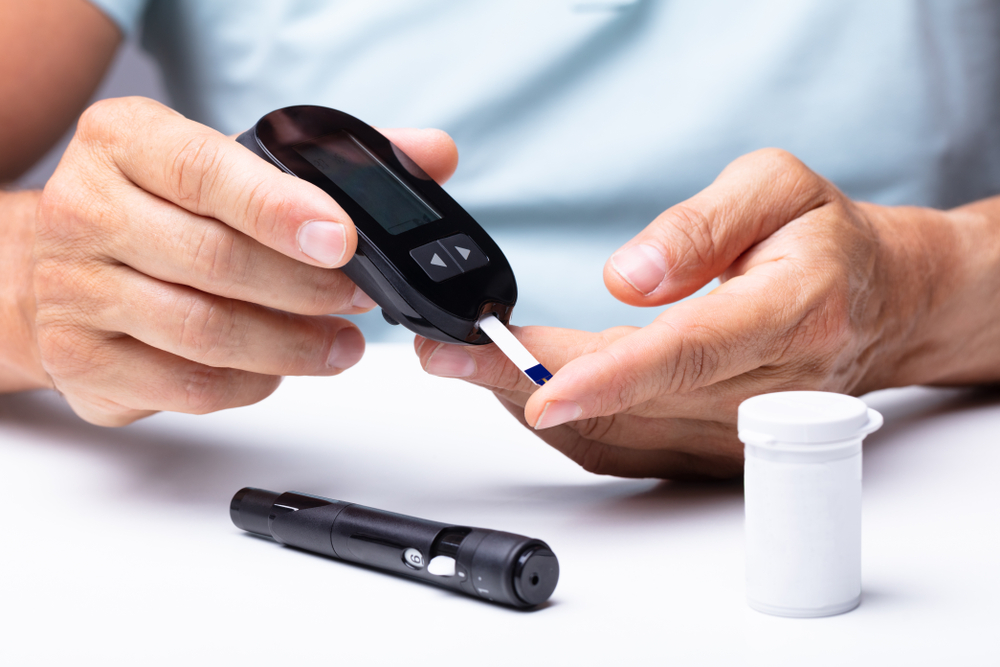Blood glucose monitoring

Most people with newly diagnosed type 2 diabetes do not need to monitor their own blood glucose levels, however, for people with type 1 diabetes, pregnant women or those with type 2 using insulin, other injections for diabetes or medications causing low blood glucose, being able to check glucose levels at home is important.
However, it is sometimes good to know which choices and behaviours are doing you good and which are less helpful by occasionally testing capillary blood glucose. It’s possible to buy a blood glucose meter, lancets and testing strips without a prescription for those that are interested in self-monitoring their blood glucose levels.
Home blood glucose testing is helpful for people with diabetes because it can help to determine hypoglycaemia (low blood glucose) or hyperglycaemia (high blood glucose) and allow users to take appropriate action.
Self-monitoring of blood glucose is most appropriate for patients with type 1 diabetes and type 2 diabetes patients who use insulin regimes and adjust their dose as a result of blood glucose testing, or those who use drugs which have a risk of hypoglycaemia. It is also useful for pregnant patients whether they have type 1, type 2 or gestational diabetes.
Help with hypos
If you are not taking insulin, sulphonylurea, nateglinide or repaglinide then you do NOT need to worry about low blood glucose – it is natural for your blood glucose to drop low if you haven’t eaten for a while. For those at risk of hypos, you should aim not to let you blood sugar drop below 4 mmol/L.
Hypoglycaemia or “hypo” is when your blood glucose levels are too low (below 4 mmol/L). It is a potentially dangerous side-effect of some diabetes tablets and insulin. Your doctor will discuss hypos as a side potential side effect if you start taking any medication that may cause hypos.
What are the warning symptoms?

You may experience:
- headaches
- shaking or dizziness
- anxiety or bad temper
- sweating
- palpitations
- hunger
- tingling lips or fingers

Others may notice you becoming:
- moody
- irritable and aggressive
- irrational
- confused
- unable to concentrate
- unable to co-ordinate (shaking)
- pale
What sort of things can cause a hypo?
It is important to consider causes of hypoglycaemia in order to prevent them.
Causes may include:
- Too little or no carbohydrate at your last meal
- Missed or late meal
- Too much insulin or tablets
- Exercise- more exercise than usual for example housework, gardening or sport. Note: A “delayed hypo” can occur several hours after exercise. Always make sure you have a suitable carbohydrate snack when you exercise
- Alcohol – this may cause you to have a “delayed hypo” i.e. overnight or the next day. Always make sure you have a suitable carbohydrate snack or meal if you have alcohol to drink
- A change in injection sites for example changing your injections from an area of lipohypertrophy (“lumpy skin”) to “normal” skin
- Direct heat or sauna treatment may affect the absorption of insulin and can potentially cause low blood glucose levels if insulin is absorbed more quickly.
- Weight loss (whether intentional or not) or a change in your lifestyle. If you lose weight, then your medication may need to be reduced to prevent hypos.
Occasionally the cause of a hypo may not be obvious. If in doubt, contact your health care provider, diabetes specialist nurse or a member of your diabetes team for advice.
How can I treat a hypo?
If you are conscious, and are having a hypo, the best way to treat it is to eat 15-20g of a fast-acting carbohydrate. Examples of fast-acting carbohydrate include sugary non-diet drinks (such as coca cola, lemonade or pure fruit juice), glucose tablets, sweets or glucose gel.
To prevent your blood glucose dropping low again it is sensible to follow-up this fast-acting carbohydrate with a slower-acting carbohydrate such as bread, biscuit, piece of fruit, or a meal if it is that time of the day.
It is recommended that you check your blood glucose 15-20 minutes after treating your hypo and treat again if necessary.
General advice about hypo
- Always carry some form of glucose for example glucose tablets or a non-diet sugary drink.
- Always carry or wear some form of identification specifying you have diabetes and your treatment.
- Tell your friends, relatives, colleagues that you have diabetes and let them know how to recognise and help if you have a hypo.
- You may have high blood glucose levels for a few hours after a hypo. This may be caused by the treatment of the hypo and your body’s natural response to a hypo.
- Night sweats, morning headache and/or wakening during night may be symptoms of hypoglycaemia during the night
- You may need to adjust your treatment before exercise to prevent hypo – ask for advice from your healthcare professional.
- You should not tolerate regular hypos – speak to your diabetes care team if this is the case.



Leave a Reply
You must be logged in to post a comment.